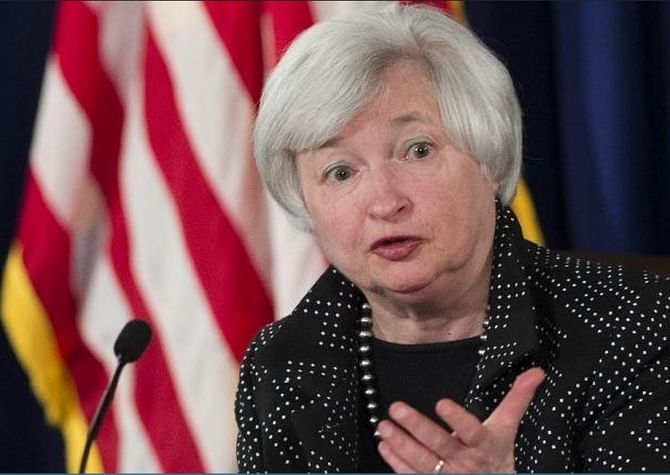Rate debate: top central bankers to speak in Jackson Hole
Rate debate: top central bankers to speak in Jackson Hole

Slow growth, low interest rates and tepid inflation on both sides of the Atlantic will be in focus this week when heads of the US and European central banks meet in Jackson Hole, Wyoming.
Officially the topic of this year's US central banker fest -- always a cerebral gathering of monetary and financial policy experts -- will be "Re-Evaluating Labor Market Dynamics," a salient topic as job growth also remains weak across leading economies.
But eyes will focus on Janet Yellen, the Federal Reserve chair, and Mario Draghi, her counterpart at the European Central Bank, with observers looking and listening for signs of what they plan for interest rates.
The August 21-23 symposium in the picturesque Rocky Mountain resort town has made news before.
In 2012, Yellen's predecessor, Ben Bernanke, used the venue to signal the Fed's plans for a new round of quantitative easing (QE), a boost for the economy that continues to this day, despite critics who at the time said it was bad policy.
Both Yellen and Draghi are slated to speak on Friday. While they both face weaker-than-expected economic growth, the decisions they face are different.
Yellen is under pressure from inflation hawks to begin raising interest rates soon after the QE stimulus is wound up in October.
Including Philadelphia Fed chief Charles Plosser, a lone dissenter on the policy-making Federal Open Market Committee, they say the Fed needs to be out in front of inflation, rather than waiting for it to act.
Under Yellen's lead, though, most FOMC policymakers are sticking to a timeline that sees the first Fed funds rate rise off the zero level coming only in the second half of 2015.
They mostly agree that unemployment remains too high, and the jobs market shows too much slack, to increase interest rates.
They don't see any significant upward pressure on inflation: the Fed's favored inflation guide, the personal consumption expenditures price index, is rising at a 1.6 percent annual pace, well below the 2 percent level at which the Fed says it would weigh tightening.
US unemployment, at 6.2 percent, remains elevated, and despite a pickup in job creation, data for July shows that real average weekly earnings, those measured against inflation, rose just 0.3 percent in the past year.
Generally, the market is looking then for a signal of what would make Yellen change her mind and move more quickly, such as how fast wages need to grow to spark inflation worries.
"Right now, we have no idea what her thinking is," said Joel Naroff of Naroff Economic Advisors.
"She needs to give us a clue of a timeline of wage pressures, how long they take to translate into the economy."
Draghi on the other hand is facing pressure to embark on more extraordinary measures to stimulate the eurozone economy, in the face of slowing inflation -- just 0.4 percent in July -- and a dead stall in the region's growth in the second quarter.
The ECB launched in June a group of measures to help the economy, including lowering its benchmark interest rate to an all-time low of 0.15 percent, and setting a negative rate for deposits from banks.
In July's policy review, Draghi held policy steady. But fresh pressures on the economy from the Ukraine crisis, including Russia's sinking toward recession and its ban on food imports from Europe and the United States, are again forcing his hand.
Indeed, on Monday Germany's Bundesbank gave a cloudy forecast for the rest of 2014.
"A flurry of unfavourable news reports relating to the international environment have dampened Germany's economic outlook in the second half of the year," it said.
Advocates for more ECB stimulus want to see a Fed-like quantitative easing programme, the central bank buying up large amounts of bonds to inject more cash into the financial system and hold long-term interest rates down.